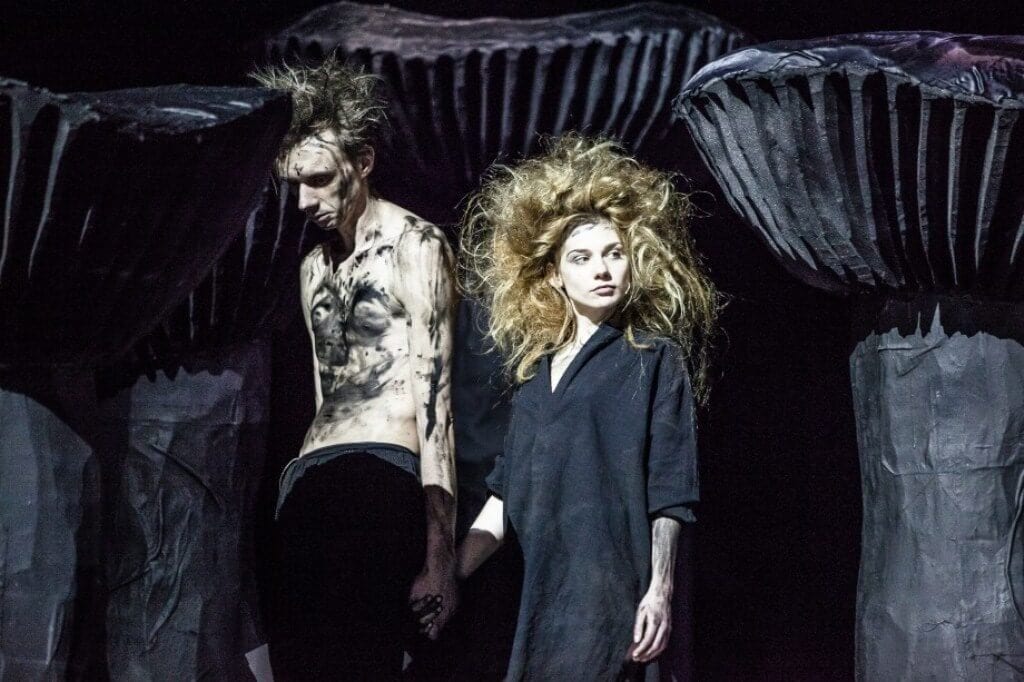Krzysztof Garbaczewski’s adaptation of The Tempest is daring: it questions what is the best way to perform Shakespeare, and challenges sexual and gender norms, resulting in a production which is at times exciting and new, but at others confusing and unconvincing. The set, created by Aleksandra Wasilkowska, is impressive, by far the best element of the production. Huge billows of black cloth hang over the stage at all times, representing both the sea and the sky at different times, while the top half of the view is obscured by a screen. The clips that are shown on this screen offer us a look into the (fictional) occurrences behind the scenes, mixing the Shakespeare play with this other story – this is an interesting technique, and at times enjoyable, but it is used too much to add anything to the production, as much of The Tempest is cut to make way for this new writing.
In this production, many of the traditionally male roles (including the lead role of Prospero) are transformed into female characters: Prospero becomes Prospera, Alonso becomes Alonsa and Gonzales becomes Gonzala. The character of Prospera, in particular, is interesting (although this is not the first time that Prospero has been turned into a female character), because Shakespeare’s character is so difficult to pin down. Some see him as wise, while others consider him to be a cunning, manipulative figure – in this production, Prospera falls into the second camp, enjoying her power over Ariel and Caliban and using that power to force Ariel to pleasure her. This is an overtly sexual production, in which Prospera is open about her sexuality – but it is unclear whether this is an example of female empowerment, or whether she is reduced to her earthly desires and stripped of traditional Prospero’s wisdom.
This is a many-layered production, with Garbaczewski drawing on the influences of previous adaptations of The Tempest, as well as other unrelated writings and films (the most obvious influence being Derek Jarman’s film of the play, while elements from his other works, such as Blue, can also be seen). However, in the end it feels a little too clever – there is an illusion of depth, but in the end the production leaves us wanting clarification in too many areas. Although the extraneous elements (the film, musical performances) are enjoyable, this production is not long enough to have several full-length song breaks, as well as the film, without losing something. What we are left with at the end are two-dimensional characters, most of whom are introduced and then never seen again, despite the performance lasting over two hours. Ewa Skibinska performs well as Prospera, but the other actors do not get enough stage time for us to form a judgment. Ultimately, this is an impressive and promising production, but in order for it to really be The Tempest, it needs a little less flash and a little more substance.

